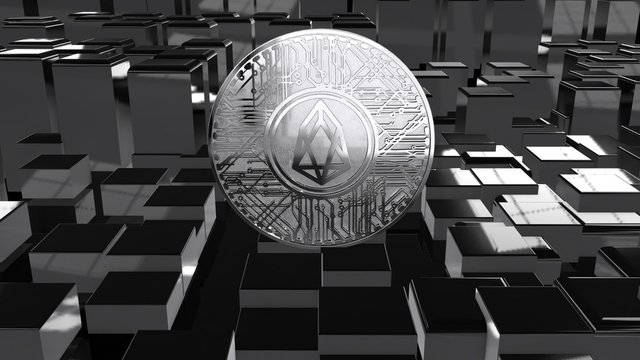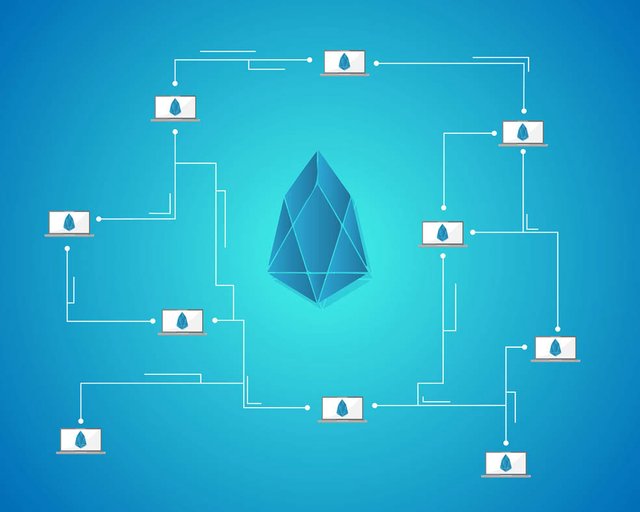Everything you need to know about EOS technology
With all the hype about the rise and fall of the Bitcoin bubble over the past 18 months, the media spotlight has never really fallen on the value of the underlying technology. EOS changes that.

Blockchain, the foundation of every cryptocurrency, is a revolutionary approach to storing and keeping tabs on transaction details by using linked blocks of information, stored in the cloud, that cannot be tampered with.
There are various underlying technologies and methodologies for writing the blockchain software – for instance, Bitcoin and Ethereum, the market leaders, have two different approaches, although the principle is the same.
But this ‘openledger’ technology can be used for far more than just providing the mechanism for a digital currency. In fact, many would argue its most important uses are only just beginning to emerge. And they are set to revolutionise the way companies do business around the world.
EOS is a great example of this potential. The tokens, which were issued as part of an initial coin offering (ICO), are in many ways a sideshow.
Business potential
What EOS is really about is capitalising on that commercial potential, providing a fast, seamless openledger technology for businesses to exploit.
It may be based on the Ethereum protocol, but EOS is Ethereum on steroids. It is designed to run blockchain-based programs called ‘smart contracts’, that can run automated transactions in the cloud.
Cryptocurrency pioneer Nick Szabo came up with the concept 20 years ago, describing it as like an advanced form of vending machine.
He wrote that “many kinds of contractual clauses (such as collateral, bonding, delineation of property rights, etc.) can be embedded in the hardware and software we deal with, in such a way as to make a breach of contract expensive (if desired, sometimes prohibitively so) for the breacher.”
Automated account debits
For instance, in business, a smart contract could be used to automatically debit a client’s account once a shipment of goods left a factory. As well as making the transaction, the information will be indelibly written and stored on the blockchain, but encrypted in such a way that sensitive information cannot be retrieved.
In finance, smart contracts can be used to speed up automated trading in a much more secure and transparent way than at present. There is still a way to go, though, and it’s not quite as secure as some would have you believe.
Ilya Sergey, a computer scientist at University College London, co-authored a study earlier this year that looked at the vulnerability of smart contracts, following several high-profile blockchain hacks.
Sergey and his team found a massive 34,000 smart contracts could be at risk. “I believe that a large number of vulnerabilities are still to be discovered and formally specified,” said Sergey.

The EOS blockchain can carry out millions of transactions per second Speedier transactions
Where EOS differs from the Ethereum protocol on which it is based is speed. Ethereum is simply not fast enough for the transaction speeds needed to keep up with technology.
According to Mike Orcutt writing in the MIT Technology Review, every node in the Ethereum network has to keep track of every account balance and the state of every smart contract.
Block.one, the company behind EOS, claims that by delegating responsibility for processing transactions to 21 nominated ‘block producers’, the system will be able to make millions of transactions every second – compared with just 15 per second for Ethereum. It also claims its system will eliminate transaction fees.
Underpinning technology
The process for choosing this ‘delegated proof of stake’ is somewhat controversial. Rather than ‘miners’ around the world competing to add blocks to the blockchain by calculating complex algorithms on costly and energy-hungry computers (the ‘proof of work’ concept behind Bitcoin and Ethereum), Block.one has allowed EOS token holders to choose who will mine the blocks.
Block.one’s chief technical officer, Dan Larimer, introduced the concept underpinning the software at BitShares, which he left to help found EOS. According to Coindesk, BitShares introduced the concept of horizontal scalability – lots of small processing done simultaneously that acts as a single, much bigger, unit. This allowed for incredibly fast transaction-processing speeds.
Horizontal scalability
Block.one chief executive Brendan Blumer says horizontal scalability – which allows for the parallel execution of smart contracts and the simultaneous processing of transactions – is the ‘game changer’ for EOS.
It is different to other blockchains in which every application is essentially running on the same network, “getting into single file line and then processing one at a time”, said Blumer. “The existing platforms don’t scale and they won’t scale without a complete rebuild.”
Coindesk says the EOS white paper claims any latency issues will be mitigated by breaking each block into ‘cycles’ divided into different threads, and subsequently into different transactions that contain messages to be delivered.
“This structure can be visualized as a tree where alternating layers are processed sequentially and in parallel,” it says.
Voting power
The controversial part of the whole EOS structure is that when it came to deciding who carries out that ‘delegated proof of work’ to speed up transaction times, those holding the most tokens had the most voting power.
Vitalik Buterin, the creator of Ethereum, has argued that it makes the system vulnerable to small groups of individuals effectively controlling the network.
That hasn’t stopped people snapping up EOS tokens, perhaps with a view to becoming one of that privileged number – more than $4bn has been raised since the ICO launched in June 2017.
Token democracy?
Token holders had to collectively stake 15% of all tokens in the system before voting could take place (though they got their tokens back afterwards), and on 14 June 2018 the threshold was reached.
The process may sound democratic, but the result are, perhaps, less so, given the top 100 holders own 75% of tokens distributed in the ICO, according to a post on Reddit – while the top 10 holders own half the total, worth some $4.7bn at today’s prices (17 June 2018).
Only time will tell whether Buterin’s words of warning will come true.
Follow OpenLedger on socials
Article states Dan left BitShares for EOS. Not true. Isn't the corrent story that he went to STEEM after BitShares and left that for EOS?
Also, why the word 'openledger' not actually having defined meaning but used out of context. I get it is attempt at SEO but the search engine crawl bots are smarter than that for years already.
superb article!
Nice summary of what's going on.
No democracy was ever mentioned. Democracy doesnt work. EOS is representative plutocracy with limited power of elected.